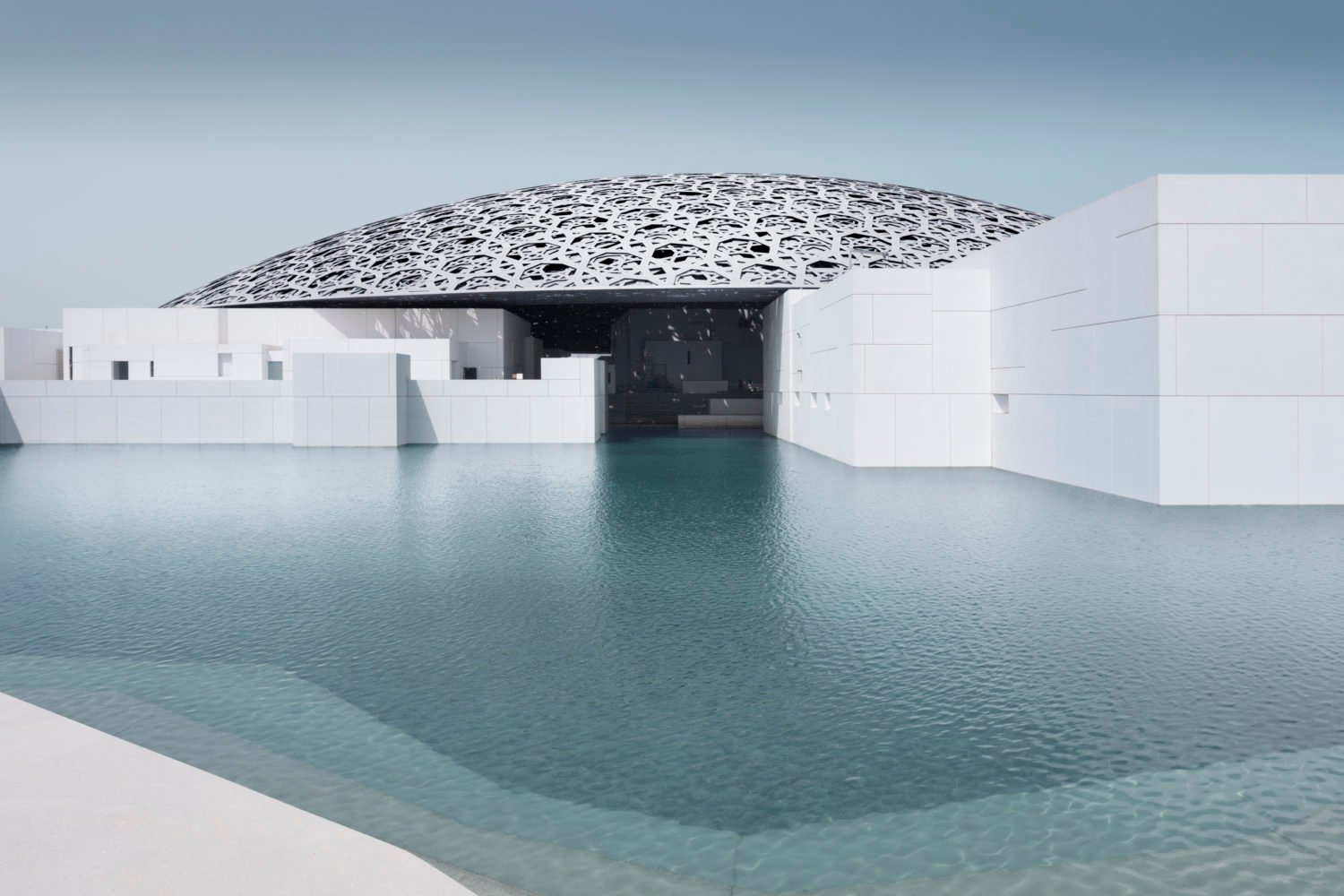
Mark your calendars. At long last, officials have announced an opening date for the Louvre Abu Dhabi: November 11, 2017. The inauguration comes a decade after France and the UAE signed a 30-year, €10-billion agreement that set the project in motion. French president Emmanuel Macron is expected to attend the ribbon-cutting.
The Saadiyat Island museum boasts a collection of more than 600 works of art that span the 3rd Millennium BCE to the present. Perhaps the most high-profile element of the project is the trove of 300 works on loan from France’s top museums, including not only from the Louvre, but also from the Musée d’Orsay, the Centre Georges Pompidou, and Versailles, among others.
The loans represent unprecedented cultural exchange between the two nations—and amount to a highlight reel of Western art history, from paintings by Leonardo Da Vinci and Giovanni Bellini to Paul Gauguin and Piet Mondrian.
Abu Dhabi paid France $525 million to license the “Louvre” name, and an additional $750 million to hire French staff to oversee the loaned works, according to the Washington Post. The agreement includes the loan of exhibitions for 15 years and the loan of artwork for a decade.
The collection will not be organized chronologically. Instead, the works will be tied together by themes such as the dawn of globalization, the portrayal of power, and the representation of the divine. One gallery dedicated to ancient religious texts will house a leaf from the “Blue Quran,” a Gothic Bible, a Pentateuch, and texts from Buddhism and Taoism.
Outside the museum, site-specific installations by contemporary artists Jenny Holzer and Giuseppe Penone will welcome visitors. The complex also includes a study center, a children’s museum, restaurants, and a shop.
Louvre Abu Dhabi’s rain of light. © Louvre Abu Dhabi, Photography: Mohamed Somji.
The building, designed by Pritzker Prize-winner Jean Nouvel, is striking. The oceanside promenades of the sprawling medina sit under a vast dome made from more than 8,000 metal stars set in a geometric pattern that create a “rain of light” as sunlight filters through the shapes. The complex design also resulted in multiple construction delays surrounding the placement of the cupola and the sealing of the structure from seawater. (The building was originally scheduled to open in 2012.)
“It is an architecture that is protective of its treasures, it is an homage to the Arab city, to its poetry in geometry and light, and, under the large cupola, it is an evocation of the temporalities which inexorably punctuate the hours, days, and the passing of our lives,” Nouvel said in a statement.
Amid the flashy architecture and glistening collections, the project has been plagued by allegations of poor conditions for the largely South Asian guest workers at the site. In 2015, a Pakistani construction worker died while working on new Louvre.
The project is part of the region’s long, ambitious quest to burnish its image as a cosmopolitan cultural center. The chairman of the city’s Tourism & Culture Authority, Mohamed Khalifa Al Mubarak, has said, “Louvre Abu Dhabi embodies our belief that nations thrive on diversity and acceptance, with a curatorial narrative that emphasizes how interconnected the world has always been…. Investment in a vibrant cultural ecosystem supports the UAE’s economic diversification and development as a modern, dynamic society.”
General admission to the museum will cost 60 AED (around $16). The inaugural exhibition, “From One Louvre to Another: Opening a Museum for Everyone,” will open December 21. The Louvre’s director Jean-Luc Martinez organized the show, which traces the history of the Paris museum.
Can’t wait until November? See some of the highlights of Louvre Abu Dhabi’s collection below.
Portrait of Fayoum Egypt, Antinoopolis, (225-250 AD). © Louvre Abu Dhabi / Thierry Ollivier
Eagle-shaped fibula from Domagnano Republic of San Marino, (2nd half of 5th century). © Louvre Abu Dhabi / Thierry Ollivier
Giovanni Bellini, Madonna and Child (between 1480 and 1485). © Louvre Abu Dhabi / Thierry Ollivier
Paul Gauguin, Children Wrestling, (1888). © Louvre Abu Dhabi / Agence Photo F
René Magritte, The Subjugated Reader, (1928) © ADAGP, Paris 2016 © Louvre Abu Dhabi / Agence Photo F
Vincent Van Gogh, Self-portrait, (1887) © Musée d’Orsay, dist. RMN-Grand Palais / Patrice Schmidt
Alberto Giacometti, Standing Woman II, (1901). © Succession Alberto Giacometti (Fondation Giacometti, Paris et Adagp, Paris) Crédit photographique : Centre Pompidou, MNAM-CCI/Philippe Migeat/Dist. RMN-GP